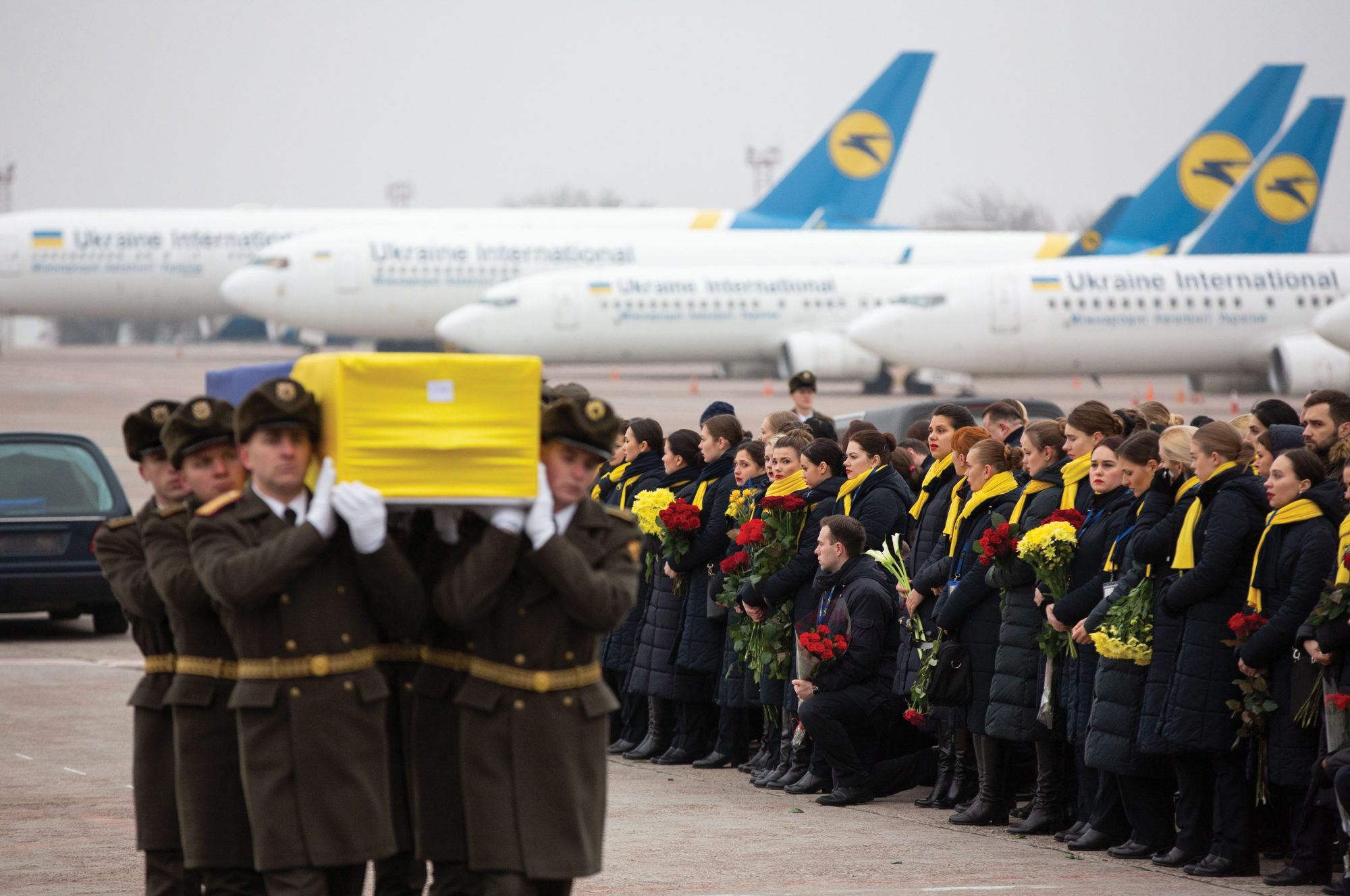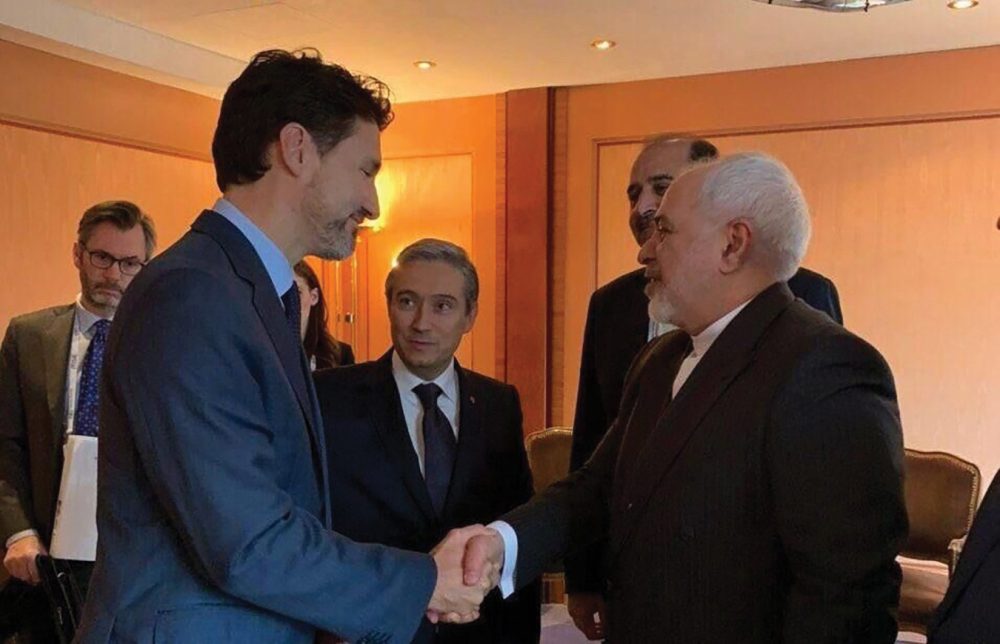U.S.-Iran Relations: Lessons for Canada From the Ukraine Airlines Tragedy

The shoot-down of a Ukraine airlines flight that killed 57 Canadians in January was the latest chapter in a decades-long legacy of U.S.-Iran tensions marked by tragedy. Canadians paid the heaviest price this time, but it highlighted the need for Canada to fully re-engage in the Persian Gulf, however difficult that might be. Dennis Horak, former Canadian head of mission in Tehran and later ambassador to Saudi Arabia, shares exceptional insights into the region and Canada’s role there.
Dennis Horak
The shoot-down of a Ukrainian airlines flight outside Tehran in January was a reminder of how quickly and unpredictably tensions with Iran can tragically escalate. Simmering hostilities between the United States and Iran were ignited, took the region to the brink and the outcome could have been catastrophic. The incident didn’t begin with the assassination of Iranian General Qassem Soleimani; nor are tensions likely to end with the subsequent walk-back from the edge.
This is a decades-long conflict that shows no sign of being resolved. Both sides are driven by fundamentally different conceptions of each other’s goals and motivations. That is unlikely to change. For Canada, the incident underscored the reality that what happens in the Persian Gulf can reverberate globally and highlighted the need to be better equipped to address those regional eventualities.
Iran’s missile launch against a civilian airliner in January was a tragedy with historic roots. The U.S.-Iran tensions that created the conditions for the attack have been a fact of life in the Gulf for decades. For Tehran, the story tracks back to Washington’s role in the overthrow of their elected Prime Minister, Mohammad Mossadegh, in 1953. For the Americans, the genesis was the hostage crisis in 1979-80. But whatever the origins, the U.S.-Iran conflict has produced a long and grim legacy marked by successive catastrophes (including a previous shootdown of an Iranian civilian airliner by the U.S. in 1988) and sustained regional instability.
The latest chapter actually began in the summer of 2019, with the Iranian bombing of two oil tankers in the Persian Gulf and an attack on a Saudi oil refinery. But it was the attack on an Iraqi military base that killed an American contractor and wounded several U.S. service personnel that set the key events in motion. Iran was widely held responsible for these incidents.

The death of an American was clearly a red line for the U.S. and they responded with an unprecedented assassination of a senior regime official—Soleimani. While the Iranian leadership promised a harsh response, their retaliation—missile strikes on two U.S. air bases in Iraq—was sufficiently measured to allow both sides to claim victory and climb back from the edge. Ironically, it was the citizens of a third country, Canada, who suffered the most from the confrontation when Iran shot down the Ukraine International Airlines flight on January 8, killing 57 Canadians. The relatively quiet pause in hostilities between Washington and Tehran since then is likely only a temporary lull. It’s hard to predict where or how the next flare-up will occur—and the January incidents may even have restored some level of deterrence—but future incidents are a near certainty.
The proximate cause of the spike in violent incidents over the past several months can be traced back to the Trump administration’s decision in May 2018 to walk away from the Joint Comprehensive Plan of Action (JCPOA), commonly known as the Iran nuclear agreement. Signed in 2015, the deal essentially traded restrictions on Iran’s nuclear program for limited sanctions relief. The agreement was widely lauded for putting the Iran nuclear problem on the back burner, but it had its critics, particularly among U.S. Republicans.
By all accounts, Iran was verifiably complying with the terms of the agreement when Donald Trump decided to the pull the plug. But for the administration, that was beside the point. The deal, in its view, was conceptually flawed. Its scope was too limited and one-sided in Iran’s favour. The administration’s decision to withdraw and apply “maximum pressure” (which included enhanced sanctions) was aimed at forcing a weakened Iran back to the table to reopen and expand the agreement. Iran rejected U.S. demands immediately. It relaunched previously restricted elements of its nuclear program and stepped up its kinetic actions in the region. The violent events in the Gulf last summer were intended as a message: If Iran could not sell its oil, they had the ability prevent others from doing so, too.
While Trump’s withdrawal from the JCPOA was clearly a spark for the recent flare-up, the JCPOA was never a launchpad for an era of U.S.-Iran détente and reconciliation. The JCPOA was not meant to be a panacea. It was a limited agreement tied narrowly to one specific item on a rather long list of Iran-related grievances. U.S. and regional concerns about Iran are driven as much by Tehran’s support for terrorism, its increasingly sophisticated missile program and, especially, its destabilizing actions across the Middle East as they were by the nuclear program. Iran’s actions on these other files was uninterrupted during the JCPOA period. Its decisive and bloody intervention in Syria, its sustained manipulation of Iraqi politics for sectarian advantage, its continued support for Hezbollah and Hamas, its backing of the Houthis in Yemen and its unrelenting hostility to Israel were unaffected by the nuclear agreement. Washington’s provocative withdrawal from the JCPOA and Iran’s reaction to it added a dangerous layer of complexity to an already volatile region, but it is was not the source of the problem.
The underlying issues run deeper. At their core, U.S.-Iran tensions reflect entrenched perceptions of their respective goals and motivations. For the U.S., the Islamic Republic is an inherently destabilizing and malevolent force in the Middle East; ideologically driven to undermine U.S. interests and influence. In their view, Iran’s desire to dominate the region through support for sectarian proxies and terrorist groups is a threat to U.S. assets and allies that must be countered. It is a perspective widely shared in the region.
For Tehran, the U.S. is a hostile power that is determined to overturn the Islamic Revolution (as it has been from the start) and restore the dominant role it had under the Shah. Opposition and resistance to the U.S. was (and remains) a pillar of the Revolution and it informs the views of the Supreme Leader, Ayatollah Khamenei (the only person in the country whose views really matter). For the regime, Iran’s cultivation of regional allies and influence and its efforts to confront Washington’s regional “puppets” and, ultimately, drive the U.S. from the region are defensive measures designed to safeguard the Revolution and Iranian security.
Finding a way around these perceptions and the behaviours they generate will be tough. They are self-reinforcing. Containing Iran does make sense; it is a destabilizing influence in a fragile region. But pressure tactics aimed at curtailing Iran’s regional activities or gutting its missile defences, while fomenting domestic unrest to create bottom-up pressure on the leadership, only inflame irredentist fears and spawn Iranian responses that can, as we have seen, quickly spiral out of control. There are no easy answers and the differences may, in fact, be irreconcilable.
So, where does Canada fit-in in all this? The short answer is, nowhere, really. Ottawa has been blind to what’s happening in Iran since the Embassy was closed in 2012 and it has been playing short-handed in Saudi Arabia since the “tweet-storm” in 2018 upended the bilateral relationship. These are the two key players (with the U.S.) in the region and Canada has no relations with one and strained links with the other. But the tragic events in January vividly underscored the fact that Canada can no longer afford to pretend that what happens in the Gulf stays in the Gulf. The Gulf matters and it can come up and bite you in ways you can’t always imagine. The government managed the consular crisis stemming from the shoot-down as well as could be expected under the circumstances. But the absence of a Canadian diplomatic presence undeniably complicated an already tragic and stressful situation for the families.
Ottawa needs to learn from the crisis and realize that Canadian interests are best served by maintaining relations—even uncomfortable ones—to be ready to respond when things go badly. This is especially true in a region as volatile and as populated with Canadians as the Gulf. There are important obstacles to reopening in Iran, with the Justice for Victims of Terrorism Act being the principal barrier. It would be irresponsible to return Canadian diplomats to Tehran with the threat of further seizures of Iranian property in Canada under the Act hanging over the relationship. The risk of Iranian retaliation would be high given Tehran’s historical disrespect for diplomatic immunity. Repairing ties with Saudi Arabia should be easier. It will require face-saving measures for both sides, but that is what diplomats do—when they have the requisite political backing.
Both moves will be challenging (and some distance from the shootdown will be needed to move forward with Iran). Neither country is popular and opposition to “rewarding” Riyadh and Tehran by normalizing ties will be fierce in some quarters. But it is worth the effort.
The Gulf is a difficult and often frustrating region. U.S.-Iran tensions (fed by and involving regional players like Saudi Arabia) will remain, but the international community has an obligation to try and moderate or manage them. As the January events demonstrated, the brink is never far off and the impact of tumbling over it will reverberate widely and, likely, tragically. If Canada fancy’s itself as an important international player—worthy of G7, G20 and, even UN Security Council membership—it would do well to position itself to act the part in a region with such broad and challenging risks.
Dennis Horak was Canada’s ambassador to Saudi Arabia from 2015-18 and head of mission/chargé d’affaires in Iran from 2009-12. He retired in 2018 after a 31-year diplomatic career.
